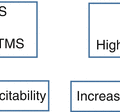© Springer International Publishing AG 2018
Stefano Masiero and Ugo Carraro (eds.)Rehabilitation Medicine for Elderly PatientsPractical Issues in Geriatricshttps://doi.org/10.1007/978-3-319-57406-6_5151. Rehabilitation Treatment in Older Cancer Patients
(1)
Department of Experimental and Clinical Oncology, Medical Oncology 1, Veneto Institute of Oncology – IRCCS, Padua, Italy
Cancer is one of the most common and disabling health-care conditions affecting people. Progress in diagnosis, treatment, and supportive care in the last years has raised the 5-year relative survival rate for all cancers to about 67% [1].
Median age at cancer diagnosis, for all cancer types, is 67 years, and by the year 2020, about 60% of new patients diagnosed with cancer will be aged 65 years and older, with estimates for the oldest old (patients aged 85 years and older) rising from the actual 9% to 17% [2].
The general improvement in survival rates observed in the overall cancer patient population has also been seen for the older ones [3].
Older individuals may present different issues unrelated to cancer; therefore supportive care along with rehabilitation measures is an essential step in the management of elderly cancer patients.
One of the main issues for cancer patients is physical disability, and this probably may also be one of the leading causes of emotional distress in cancer survivors.
The goals of cancer treatment in older cancer patients therefore must include, along with prolongation of life expectancy, the prevention of functional dependence.
Indeed, disability in older patients, and consequent impairment in functional status is strongly associated with frailty, which in turn is associated with higher mortality [4].
For older patients, “standard” oncological outcomes which are normally pursued in the adult population such as increased overall survival or progression-free survival may indeed be not a major goal if they come at the price of losing independence [5].
Rehabilitation for older cancer patients may be needed in two major settings, namely that of curable malignancies and a palliative setting in which incurable malignancies have an indolent clinical course.
For most localized tumors, in addition to surgery and/or radiation treatment, the optimal management often involves the use of adjuvant systemic therapy. This consists of endocrine therapy, cytotoxic therapy, or targeted therapy administered in order to reduce the risk of recurrence and death in patients at high risk of relapse after local treatment.
The rehabilitation of older cancer survivors is largely unknown, and several issues related both to the needs and interventions indeed deserve further studies.
As for rehabilitation needs for advanced tumors, we must acknowledge that some forms of advanced stage lymphoma, especially large cell lymphomas, are curable. Also, some incurable malignancies with an indolent clinical course may benefit from rehabilitation, and these are mainly low-grade lymphomas and breast or prostate cancer with bone metastases only.
Most older patients treated for cancer will likely experience some toxicity which may hamper their quality of life and, in some cases, mine their autonomy.
In this light, it has long been known that older patients with a cancer diagnosis are best managed by means of a Comprehensive Geriatric Assessment, with a thorough evaluation of several domains pertaining their functional status, cognitive status, mood, nutritional status, social and living conditions, and polipharmacology.
A progressive decline in one or more of these domains leads to reduced life expectancy and functional reserve [6, 7].
Cancer may increase the likelihood for older patients to need rehabilitation.
Cancer itself may worsen baseline conditions which are common in older subjects, such as malnutrition or sarcopenia. Also, cancer may cause and/or increase fatigue.
Moreover, both acute and chronic complications of cytotoxic chemotherapy increase with age [8].
Among the acute complications, myelotoxicity, mucositis, cardiotoxicity, and peripheral neurotoxicity are the most common.
Of the chronic complications, some conditions in particular may increase the need of rehabilitation for older cancer survivors, and these are fatigue, dementia, deconditioning, chronic cardiac dysfunction, and chronic polyneuropathy.
51.1 Fatigue
Fatigue is defined as a condition of exhaustion that does not improve with rest [9].
Fatigue is both an acute and a chronic complication of cytotoxic chemotherapy that is more common with increasing age [10] and may represent a major cause of functional dependence.
In older individuals, fatigue is a cause of deconditioning [11], functional dependence [12, 13], and increased mortality [14].
Any serious attempt to rehabilitate older cancer patients should include a plan to prevent and overcome fatigue.
The causes and the mechanisms of fatigue are largely unknown. It is clear that fatigue is associated with chronic inflammation and sarcopenia and may be improved with the correction of anemia in some patients [15].
Beside the cancer itself, which is one of the causes of fatigue in those patients with active disease, among other presumptive causes of fatigue, there are chemotherapy, as well as polipharmacy and sleep disorders [16].
The management of fatigue is paramount to the functional rehabilitation of older patients. This involves both prevention and timely treatment.
51.2 Cognitive Decline
Another important concern in older patients undergoing chemotherapy is the possible role of chemotherapy as a cause of dementia. Though the evidence supporting this association is inconclusive [17, 18], it is well known that chemotherapy may lead to some form of cognitive decline and that older people are at particular risk for this complication [19, 20].
51.3 Deconditioning
Deconditioning is a common complication of prolonged hospitalization and prolonged inactivity in elderly individuals [11]. Older cancer patients are at particular risk of prolonged hospitalization from surgical and medical complications as well as of prolonged at home inactivity due to fatigue and malnutrition. Several controlled trials have assessed the prevention of deconditioning with exercise and home interventions, in particular the role of exercise and nutrition [21, 22].
51.4 Other Chronic Treatment-Associated Toxicities
Older individuals are at increased risk for long-term toxicity of chemotherapy. Among others, we acknowledge and include chronic cardiomyopathy from anthracyclines [23] and peripheral neuropathy [3].
Both sensory and motor neuropathies are a common complication of the treatment with platinum salts, vinca alkaloids, taxanes, and eribulin. Such complication is more frequent in older patients, and it may become chronic and irreversible.
At present an empiric approach to such problems includes careful cardiological baseline and follow-up evaluations, discontinuance of chemotherapy in the presence of early signs of toxicity, cardiological treatment for cardiomyopathy, and early rehabilitation of neurologic deficits.
51.5 Conclusions
It is of utmost importance to adopt all supportive measures in order to successfully treat vulnerable and unfit elderly patients with cancer and to reduce the risk of functional impairment.
In particular, it is important to rule out anemia and possible causes of anemia and correct them whenever possible in order to reduce anemia-associated fatigue and to choose cytotoxics according to expected acute and chronic adverse events [24].
Several important issues still need to be addressed in the field of rehabilitation of older cancer patients, in particular whether cancer and its treatment accelerate the physiologic aging of a person and whether nutritional interventions, exercise, and management of anemia have a role in preventing the long-term complications of cancer and its treatment and the long-term social implications of cancer and its treatment.
51.6 Rehabilitation Treatment in Neuro-oncology
Primary brain tumors account for 1% of all cancers in adults and affect 5–13 per 100,000 population worldwide annually. In the last years, the overall incidence of brain tumors has increased, especially in elderly patients in which the incidence has doubled; moreover, 20–40% of patients with cancer develops nervous system (NS) metastases [25].
A wide variety of impairments of nervous system function may result from cancer, either by direct effect at the primary or metastatic tumor site or as a treatment consequence, such as neurosurgery, chemotherapy, radiation therapy, and corticosteroids, alone or in combination. Some of the most adverse effects associated with these treatments include fatigue, myopathy, insomnia, and mood disturbance. Anticonvulsant medications may further accentuate fatigue and somnolence.
Stay updated, free articles. Join our Telegram channel

Full access? Get Clinical Tree





